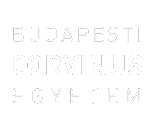Kovács, Marcell (2022) How does communication set the stage for a regime? A linguistic comparative analysis of the Horthy, Kádár and Orbán-regime. BA/BSc szakdolgozat, BCE Kommunikáció és Szociológia Intézet, Kommunikáció- és Médiatudomány Tanszék.
|
PDF
- Requires a PDF viewer such as GSview, Xpdf or Adobe Acrobat Reader
937kB |
Absztrakt (kivonat)
I am going to analyse the political communication of the Horthy and Kádár system as well as the political communication of the Hungarian Nemzeti Együttműködés Rendszere (NER, system of national cooperationI assume that no matter whether a political system is democtratic or authoritarian, when it holds power for a decade it needs to share similar communication techniques in order to maintain power. Therefore, my aim is to detect similarities in the political communication of the three systems. It might be controversial at first why did I decide to compare the political communication of a democratically elected regime with half or total authoritarian regimes which have been ruled for decades. I have three motives for my determination. First the NER’s ruling can be compared with the regimes of Horthy and Kádár as it has been standing for a decade and is the third longest ruling political system in the modern history of Hungarian politics. As a result of it the importance of the NER in the history of Hunagrian politics is commensurable with the regime of Horthy and Kádár. Furthermore the political communication of the NER is appealing for Horthy and Kádár nostalgia and the leader of the regime Viktor Orbán has a similar paternalistic role as Miklós Horthy or János Kádár had. In addition the symbols the NER use in its communication are similar to the ones used in the regimes of Horthy and Kádár. For example the wartime rethorics is used frequently in their political communications. Referred to the mentioned causes there is a strong claim for comparison. I will focus on the political speeches of the selected regime's leaders, i.e. Miklós Horthy, János Kádár and Viktor Orbán. I will specifically analyse those speeches which are the fundamental roots of the regimes and their ideologies. I am going to search for symbols and metaphors such as wartime communication, as all the three regimes use it as a communication tool. I believe that these speeches had a great effect on the political communication of these regimes, as they can be considered as starting points of the communication style which was used in order to maintain power. Finally, I will compare the similarities and the differences in the political communication of the analysed regimes. As a conclusion I believe that despite the ideological differences between the analysed regimes, I will find similarities and equivalents in their communication tools.I suppose that the motives behind their wartime rethorics will be similar. I messems that in the communication of the NER I will find equivalent tools used by the regimes of Horthy and Kádár. Furthermore the nation and the nemesis of it will be found as a symbol in all the three analysed regimes communication.
| Tétel típus: | BA/BSc szakdolgozat |
|---|---|
| Témakör: | Média és kommunikáció Politikatudomány |
| Azonosító kód: | 15312 |
| Képzés/szak: | Communication and Media Science |
| Elhelyezés dátuma: | 26 Jan 2023 12:30 |
| Utolsó változtatás: | 26 Jan 2023 12:30 |
Csak a repozitórium munkatársainak: tétel módosító lap

